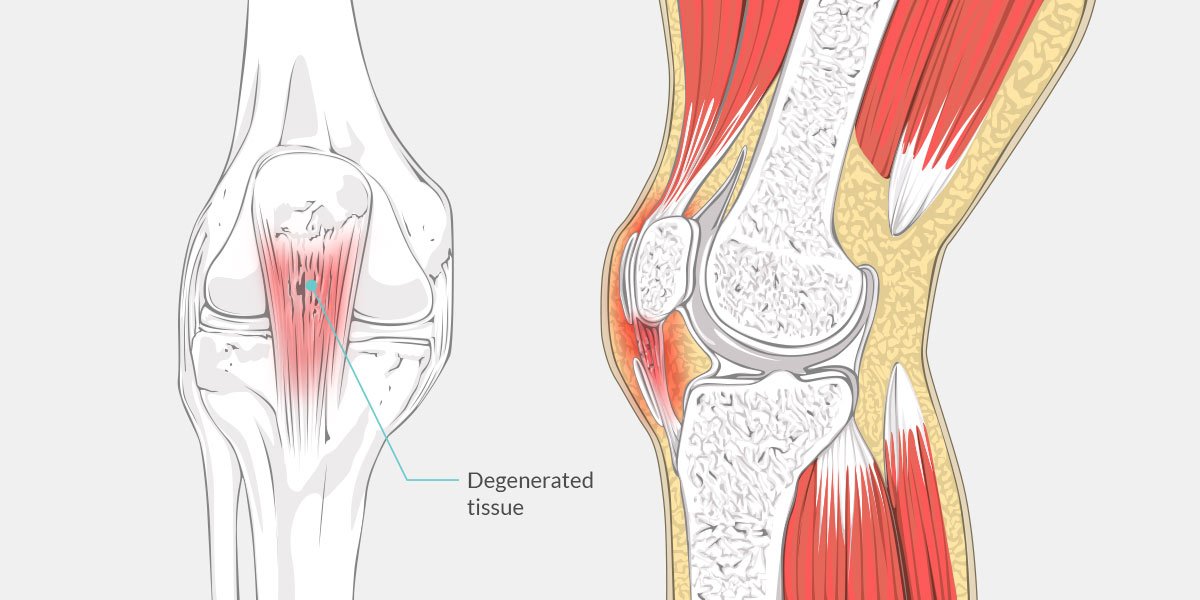Diagnosing Patellar Tendinitis
Getting knee tendonitis treatment Westchester ranks as a critical step in wellbeing for any Westchester resident suffering from patellar tendinitis. The condition results from damage to the tendon that connects the shinbone to the kneecap - usually caused by an injury

or inflammation. The condition occurs frequently among sports enthusiasts and active people - especially basketball and volleyball players - but anyone can develop the problem.
tendinitis, also called jumper’s knee, generates pain in the front part of the knee below the kneecap. Swelling and tenderness are common, and the pain is aggravated by walking, running, jumping and bending or straightening your leg. If the pain doesn’t go away within a reasonable time after exercise, getting a professional diagnosis from a physician or chiropractor Westechester is recommended.
Your doctor usually begins a diagnosis by examining the affected area and applying pressure to different areas. Technologies that your doctor might use include these imaging tests:
- MRIsMagnetic resonance imaging employs radio waves to map an internal image of the patellar tendon. The waves can create detailed images that show subtle changes in the tendon’s function.
- UltrasoundUltrasound can map images of soft tissue like tendons and measure blood flow to determine whether blockages are causing the problem.
- X-RaysX-rays are used to detect whether you suffer from some underlying bone problems.
Treatment for Jumper’s Knee
In severe cases, surgery might become necessary, but most physicians or chiropractors begin with less invasive treatments. These include medications, therapy and strapping the tendon. Treatment options include the following:
- MedicationsIn many cases, the tendon will heal on its own with time and rest. Common over-the-counter pain relievers can provide relief from the pain and discomfort of patellar tendinitis. These include ibuprofen, aspirin and naproxen sodium.
- Therapeutic ExercisesCareful exercise can relieve the symptoms of jumper’s knee, and your chiropractor Westchester can make specific recommendations based on your overall health. These might include stretching exercises, which reduce muscle spasms and relieve pressure by lengthening the muscle-tendon assembly. Strengthening exercises, such as lowering the leg slowly, can strengthen all the leg muscles without putting too much strain on them.
- Using a Tendon StrapUsing a patellar tendon strap can channel force away from the damaged area and through the strap. The procedure also involves spreading a topical medication on the skin and using a device that generates an electrical charge to push the medicine to the tendon. The twin therapies of relieving pressure and reducing pain can allow the tendon to heal naturally without further aggravating the injury.
- Surgical AlternativesIf noninvasive treatments don’t provide relief, there are minimally invasive surgical options that provide symptom relief. These include corticosteroid injections, platelet-rich plasma injections and the oscillating needle procedure:
- Corticosteroid injections into the sheath surrounding the tendon can relieve pain, but the drug can also weaken the tendon. Excessive injections can cause the tendons to rupture.
- Injections of platelet-rich plasma can treat chronic patellar tendinitis, which is often caused by circulatory blockages. The supply of platelets can help the tendon to self-repair the damage.
- The oscillating needle procedure, which is relatively new, is performed under local anesthesia. The small needle cuts away damaged tissue and leaves healthy tissue.
- SurgeryIf other treatments fail, surgery is an option. The surgeons debrides the tendon to stimulate healthy tissue growth. The work can usually be done through small incisions in the knee area.
Personal Care Recommendations
Prevention is the best therapy, and there are many ways to prevent patellar tendinitis. These include stretching before strenuous physical activities and paying attention to your body’s signals. Jumper’s knee can be caused by physical exertion when the leg muscles are too tight and when you experience a muscular imbalance. Some illnesses restrict blood flow and can cause the condition. As soon as you notice knee pain, you should ice the area and try to rest.
Light physical therapy to stretch and strengthen the muscles in the knee area can also be helpful. Improving your technique can also relieve stress on the body’s tendons, muscles and bones. Failing to address the issue promptly can result in further tearing of the tendon and cause more severe pain and symptoms.
Knee Tendonitis Treatment Westchester
The first step in any knee injury is self-care. That includes icing the affected area, reducing activity and avoiding strenuous work. If you experience sudden pain, don’t try to play or work through it. If the pain continues, call your doctor for an appointment. The doctor might refer you to a sports medicine specialist or chiropractor Westchester for further treatment and therapy.
Office Locations
Los Angeles
8810 South Sepulveda Blvd Los Angeles,
CA 90045
Contact Us
Have a question? Contact us today. We welcome patients from all over the world and would like to help you look your best. Whether it’s regarding a small headache or post-surgical rehab, Dr. Naim is experienced and will be able to recommend what’s best for you.
8810 South Sepulveda Blvd,
Los Angeles, CA 90045
310 464 1891
info@premierechiro.com